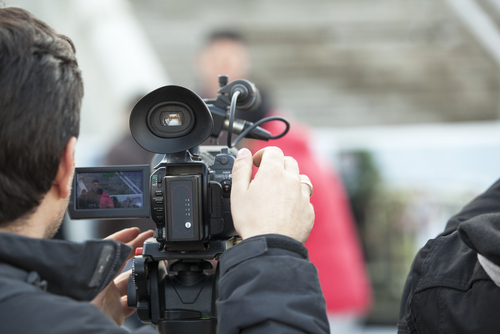Our Blog
This is the third and final segment of our blog series on preparing for a video interview. This segment will provide some useful tips on the interview process and how to respond to questions.
People are often nervous about being interviewed on camera. It is important to remember that the types of interviews we conduct are for some kind of informational video, whether it be for marketing, internal communications, training, etc. In this type of interview, you are not on the hot seat! It is the director’s job to make you look as good as possible so you will always have the opportunity to do a re-take if you are not happy with your answer.
I find that interview subjects often ask for a list of questions ahead of time. I am reluctant to provide the questions because I don’t want the person being interviewed to rehearse their answers. At the same time, I know if I were to be interviewed I would want to prepare. What I usually do is provide the interviewee with a list of questions similar to what I will be asking but not exactly what I will be asking and not in the same order. This allows the interviewee to prepare and to feel more comfortable going into the interview but ensures the answers remain spontaneous. I have also had clients who have written the questions and answers for their staff members who are going to be interviewed and requested the answers be on a teleprompter. Nothing looks worse on camera and I have never seen anyone read answers and make it look natural. This is a practice that should always be avoided.
Going into the interview there are a few basic things to know. An on-camera interview is not a natural interaction like having a conversation. It should appear conversational but there are some real differences. Except for in very special circumstances, you will be looking at the interviewer and not at the camera. Always hold your look toward the interviewer and avoid making eye contact with the camera. You may have seen an interview where the subject doesn’t know where to look so they shift their eyes back and forth between the interviewer and the camera. This never looks good and makes the person being interviewed appear shifty and unfocused.
In most cases, the interviewer’s questions will never be heard in the finished video. This requires the interviewee to respond in a way that allows the statement to stand on its own without hearing the question. For example, if the question is: “How long has your company been in business? The response shouldn’t be…”7 years”. The proper response for a video interview would be, “Direct Impact Media has been in business for 7 years”. That way the video editor has a complete thought that can be used and cut together with other responses. When you finish your answer continue to hold your look to the interviewer and don’t look to camera. People will often look to the cameraperson for approval but the editor needs you to hold your gaze for at least a second once you have completed your answer.
It is also important for the interviewee and the interviewer not to speak over one another. Wait until the interviewer has finished speaking before responding. If the interviewer is experienced they won’t speak over you. If they want to provide feedback you will often see them nodding their head without saying anything. This provides feedback to the interview subject while avoiding crosstalk, which will often make the answer unusable.
When answering questions it is best if you can speak in sound bites. Answers that ramble on are hard to use and require lots of editing. Answers that are 20-30 seconds in length are best. Most people feel like they need to say too much so practice ending your thought. Often people will give a great response to a question but they never conclude their thought. As the interviewer, I often ask the person I am interviewing to give me a condensed version of their answer. That helps get the main points while keeping the response succinct.
Another technique I use is to ask the same question in a variety of ways. Getting different answers to the same question gives the editor choices when piecing it all together. If you are being interviewed and the interviewer asks you a very similar question in a different way just answer the question and understand that this is a technique. Do not say things like “as I said…”. The final video will probably only use a few clips from your interview so the viewer will never know that you are repeating yourself.
The main thing is to relax, be sincere, and smile at the person you are talking to. Try to forget the camera is there. I find people relax after a few minutes and usually, the interviewer will ask you a couple of throw away questions just to give you a chance to get in the groove. If you are finding it difficult, your camera crew will usually help you through the process.
Thanks for reading this series of blog posts and I hope it provides some useful advice for the next time you appear on camera. Please let us know if this series has been helpful.


